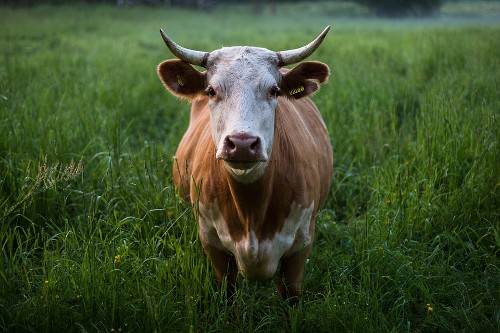Research Shows Cow Dung As A Sustainable Material Of The Future
Livestock dung could be used to create the next generation of cellulosic materials, according to a new report.
Livestock dung is typically used as a fertiliser or as a source of biogas for green energy applications, but the study, led by scientists at Scotland’s Rural College (SRUC) in collaboration with the universities of Bristol and Edinburgh, reviewed recent research into the development of high-value manure-derived materials from ruminant animals such as cattle.
They found that dung has been largely overlooked despite the variety of different applications for recycled ruminant waste biomass (RWB).
The most common applications use manure in combination with other components to create composite materials such as plastic, recycled card and paper or concrete. However, it could also be used for the extraction of nanocellulose – a prospective bio-based and biodegradable material of the future.
Currently, there is a trade-off between the performance of the material and the amount of processing required to achieve this – limiting the capacity of RWB to replace conventional materials on a commercial level.
Professor Fabrizio Scarpa, from Bristol’s Department of Aerospace Engineering, explained: “In this study we have looked at assessing current manufacturing processes and performance of sustainable composites with lignin-based reinforcements extracted essentially from ruminant waste.
“Those composites can also be made by using various types of recycled plastics, together with different classes of reclaimed natural fibres. This is very promising for future sustainable materials applications in the extraction of nanocellulose from manure.
“Nanocellulose is a biobased material with very interesting characteristics from the mechanical perspective. We found evidence that manure-derived reinforcements could also provide mechanical characteristics like analogous existing composites made from reinforcements derived from non-waste sources.
“In the paper we also describe some potential roadmaps to consider synthetic biology routes to make viable biobased materials from manure, and moving the production of materials towards a sustainable, circular, and local supply chain.”
Vijai Kumar Gupta, Senior Challenge Research Fellow at SRUC, said: “Given the demand for sustainable materials and the ever-increasing interest in nanocellulose research, it is highly likely that it will soon be brought out of the lab and into factories and everyday products.
“Ruminant waste biomass could be instrumental for the transition of nanocellulose production to large and economically viable scales.”
“Nanocellulose, in combination with other materials such as polymers, metals and ceramics, has huge potential for use in antibacterial agents, antioxidants, sensors, electromagnetic shielding devices, adsorbents in water treatment, fuel cells, electrochromic and in biomedical applications.”

